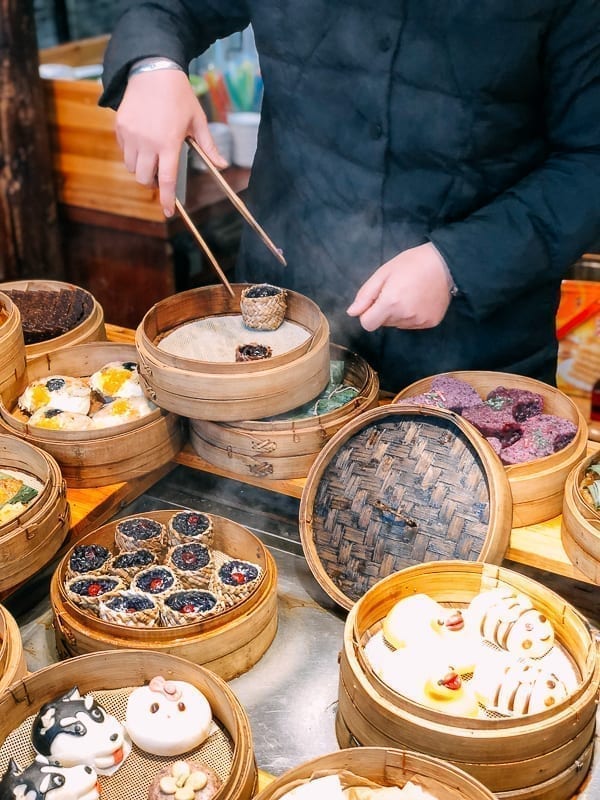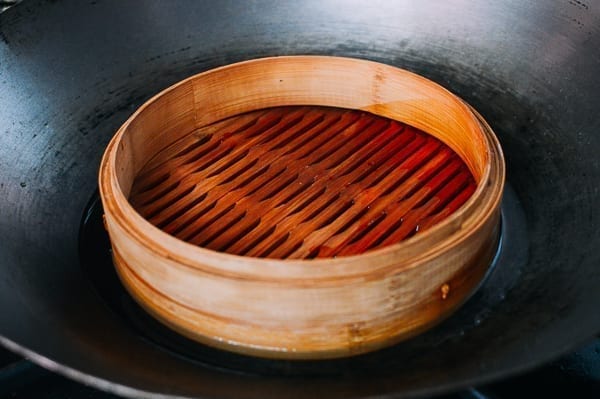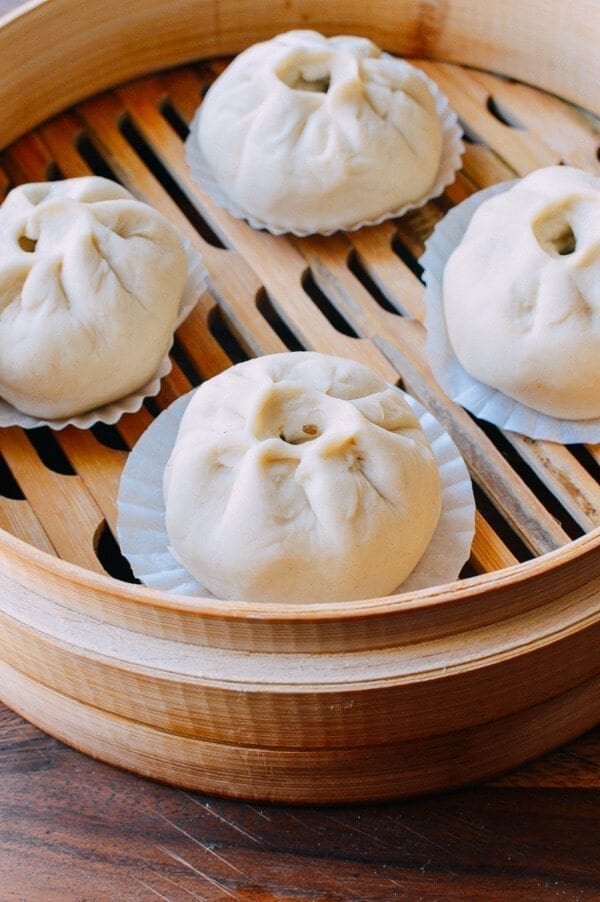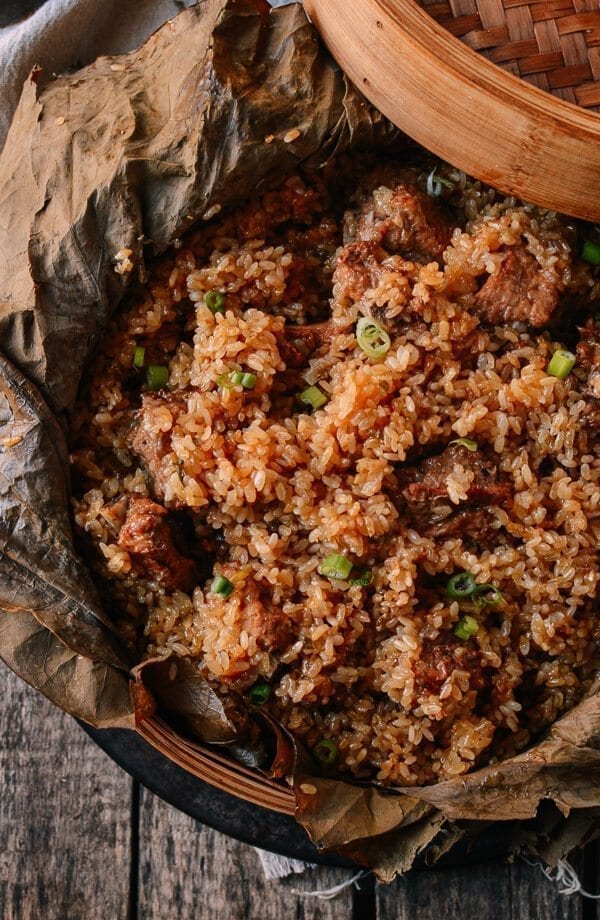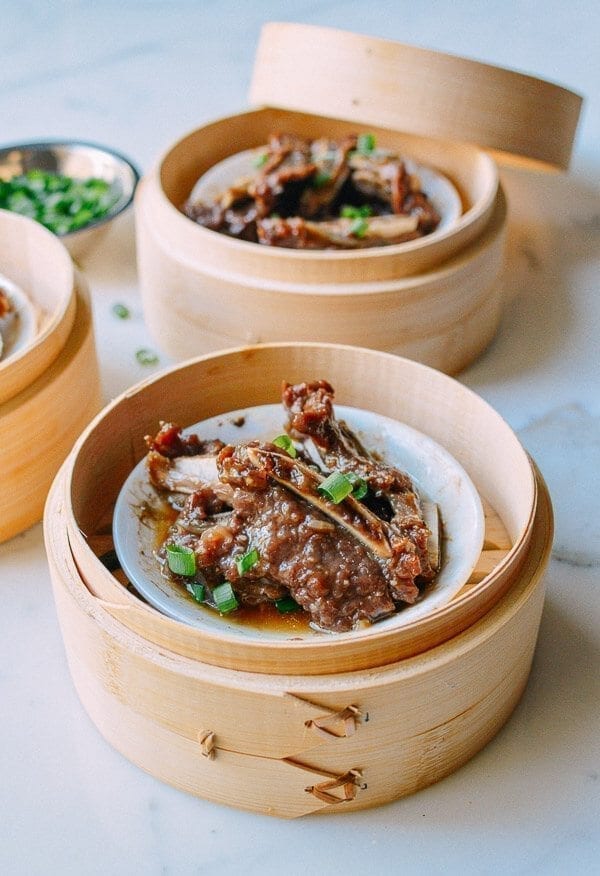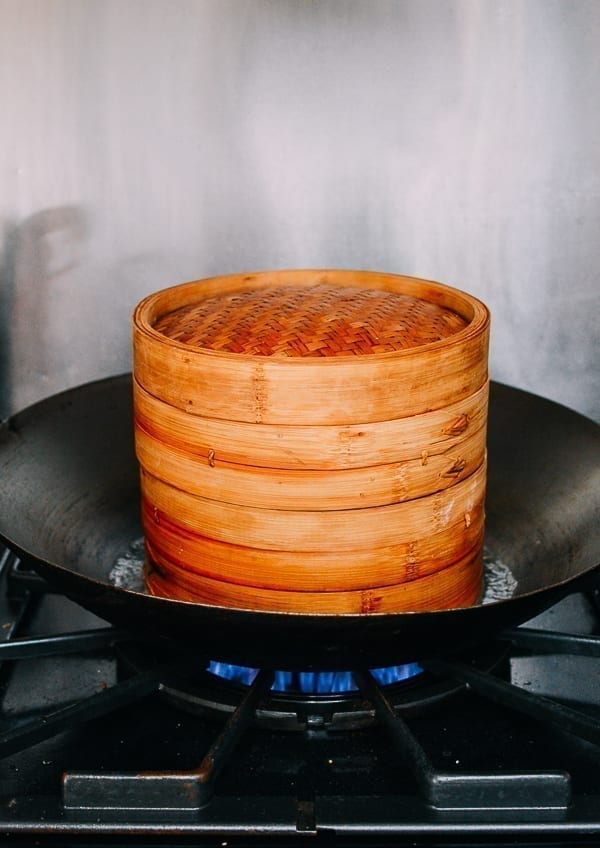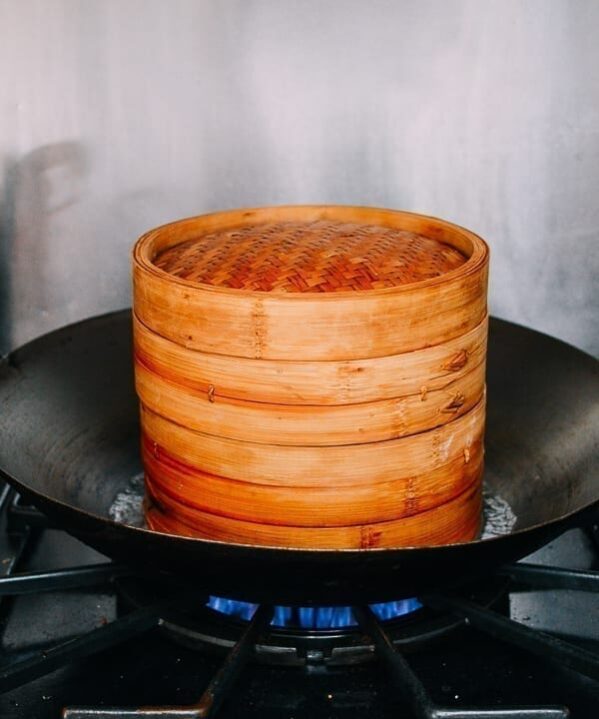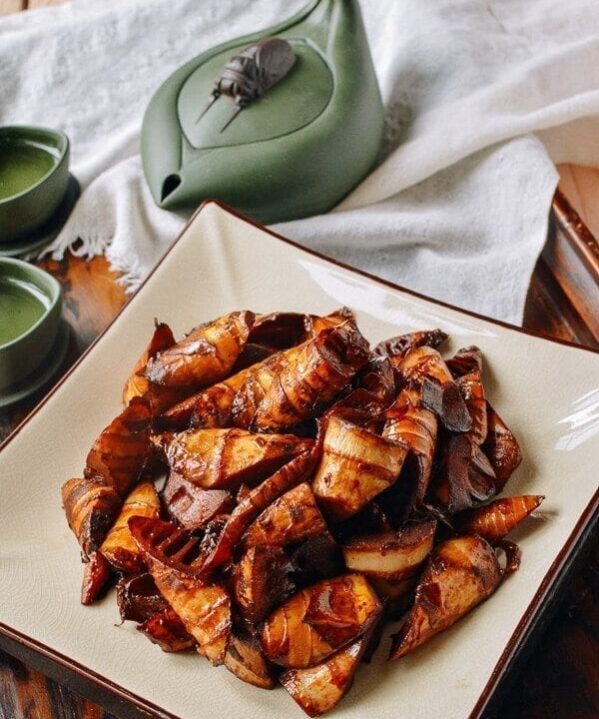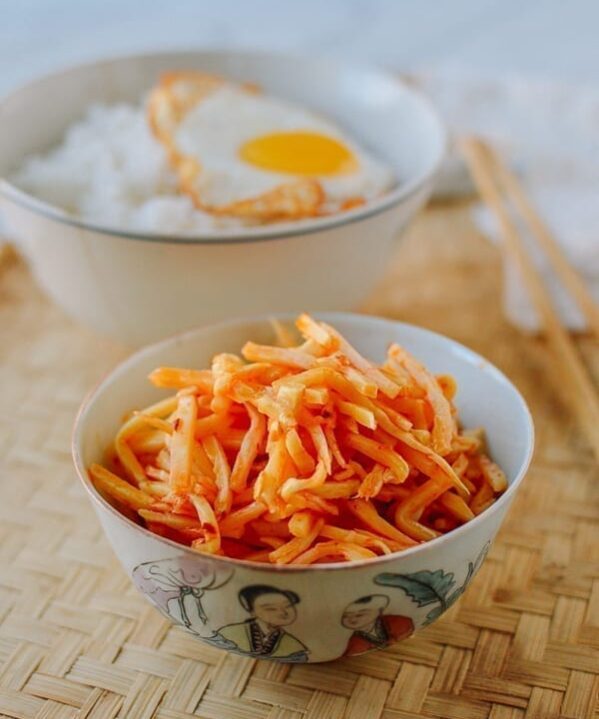While there are many different ways to steam food, using a bamboo steamer is our preferred method for steaming just about anything!
In this article, we provide step-by-step instructions on how to use a bamboo steamer, so you can start taking advantage of this useful cooking tool!
What is a Bamboo Steamer?
Bamboo steamers consist of interlocking baskets that stack on top of each other, with a lid on top. The entire setup is placed over a wok or pot of simmering water, and the steam rises through the open ridges at the bottom of each basket, up through the layers to cook whatever’s inside.
Investing in a bamboo steamer may seem superfluous; it seems like one of those cooking tools you don’t really need. But you may find yourself using it more often that you imagined. Steaming, as a cooking method, is as ubiquitous and important in Asian cuisine as baking or roasting is in American or European cooking.
With a bamboo steamer, you can steam not just buns and dumplings, but also breads, vegetables, rice, proteins, and cakes and other desserts.
And as we talked about in our post about how to steam food in general, steaming is not only a great way to cook food, it’s also a great way to reheat it. Because steaming reintroduces moisture into food, it can be a great way to make your food fresh once again!
Bamboo steamers are also a wonderful invention because their lids don’t collect condensation (which would drip onto the food in the steamer basket and alter its texture, taste, or appearance).
The art of steaming has long been practiced by Chinese cooks. If you’re ready to start learning that art for yourself, here are our instructions on how to use a bamboo steamer.
How to Use a Bamboo Steamer
Step 1: Fill Your Wok (or other pan) with Water
Place the bamboo steamer into your wok (or another wide-rimmed, shallow pan, like a wide skillet), and fill it with enough water to come up above the bottom rim of the steamer by about a quarter inch to half an inch.
The water must come up high enough to submerge the bottom rim of the steamer in water and prevent it from scorching. But it must also be low enough so that the bubbling water does not touch the bottom of the inside bed of the steamer and the food sitting on it.
If your bamboo steamer is brand new, you might want to soak this bottom rim of the steamer (that will come into direct contact with the pan) for 30 minutes or so, to ensure that it doesn’t scorch. After using it, just make sure it is fully dried out before storing, or it may form mold.
NOTE: A wok is the best tool to use in conjunction with a bamboo steamer, because the wok is thin, making it easier to boil water and regulate water temperature, and it has a wide rim that can accommodate bamboo steamers of different sizes. That said, our most often used bamboo steamer size is 10 inches in diameter, and it’s definitely the all-purpose size we’d recommend buying. If you have a large skillet that can accommodate a steamer of that size, that works too!
Step 2: Line the Bamboo Steamer
Once you have the water level where you want it, you can line your bamboo steamer baskets. A bamboo steamer can have many levels. Ours has 3, and we may use 1, 2, or 3 at a time, depending on how much food we have to steam.
If you’re placing food directly on the steamer bed (as is the case with buns or dumplings, for instance), you will need something to line it with to prevent the food from sticking to the bamboo. You can use large, soft napa cabbage leaves, lettuce leaves, layers of cheesecloth, or even squares of parchment paper. You can also get round, perforated parchment paper liners made specifically for bamboo steamers, or even better, reusable cloth or silicone liners.
Whatever you line the steamer with should be porous, to allow the steam to come up through the bottom of the steamer and circulate around the food to cook it.
The only exception to this rule is if you’re steaming marinated meats and/or vegetables, which you’ll want to steam in a heatproof plate/bowl to collect any sauce/juices. If you’re steaming food in a heat-proof bowl, plate, or other container (like the lotus leaves used in this recipe for steamed ribs with sticky rice), you can skip this step.
In this example below, you can see that the buns are placed on individual paper liners:
And in this example, you’ll see that the steamer is lined with a lotus leaf:
In this photo, you can see examples of silicone mats as well as cloth liners:
And finally, in this example, the food is steamed in a heatproof dish placed inside the steamer:
Step 3: Place Food in Your Bamboo Steamer
When placing dumplings, shumai, or buns in the steamer, do not overcrowd them! Keep in mind that their size will increase as they steam. Like cookies on a cookie sheet, they need room to expand. Always leave about 1 inch between dumplings, and about 1 1/2 inches between larger buns.
If you’d like to steam something in a bowl or plate, there is no need to line the steamer. You can place the heat-proof shallow bowl or plate directly in the steamer basket. Just be sure the lid still fits on top. Also make sure that there’s enough open space around the dish to allow the steam to rise up and circulate around the food. It’s also a good idea for the plate to have a rim, to collect any flavorful sauce that may accumulate in the dish.
Not sure of when you’d use a bowl or plate to steam something? We would use it for steaming vegetables like butternut squash or pumpkin to make a puree for pies, cakes, and other desserts. We also use this method for dishes like Steamed Chicken with Mushrooms.
Step 4: Place Bamboo Steamer in Wok/Pot
Now, you can either preheat your water so that it’s simmering when you place the bamboo steamer into the wok or pan, or you can place the steamer into the wok/pan when the water is still cold and then turn on the heat to gradually bring up the temperature.
Unless otherwise specified, our default is the latter––placing the steamer onto the wok or pan when the water is cold, and then turning on the heat.
NOTE: If steaming dumplings or buns that were once frozen, there is no need to thaw them! Just place the frozen dumplings in your steamer and start the steaming process.
Step 5: Allow Food to Steam & Check Water Level
Once the water in the wok/pan is simmering, it will start to evaporate. Allow the food to steam for as long as the recipe indicates, but keep an eye on it and add boiling water as needed. Make sure you’re not adding cold water, or it will stop simmering and interrupt the cooking process.
Caring for Your Bamboo Steamer
Again, before using a brand new steamer, you may want to soak the bottom layer (just the rim that comes in contact with the wok or pan) in water for 30 minutes or so, to ensure that it doesn’t scorch or burn. After using it, just make sure it is fully dried out before storing, or it may form mold.
To clean your bamboo steamer, wash with a sponge and mild dish soap, and immediately rinse thoroughly.
Let the steamer air dry for at least 2 days before storing to prevent any mold or mildew.
Do not put your bamboo steamer in the dishwasher. Do not soak it in water in the sink for more than 5 minutes.
We hope this article has shed some light on how to use a bamboo steamer, and why it’s such a useful cooking tool in an Asian (or any) kitchen.
Let us know in the comments if you have any questions!
